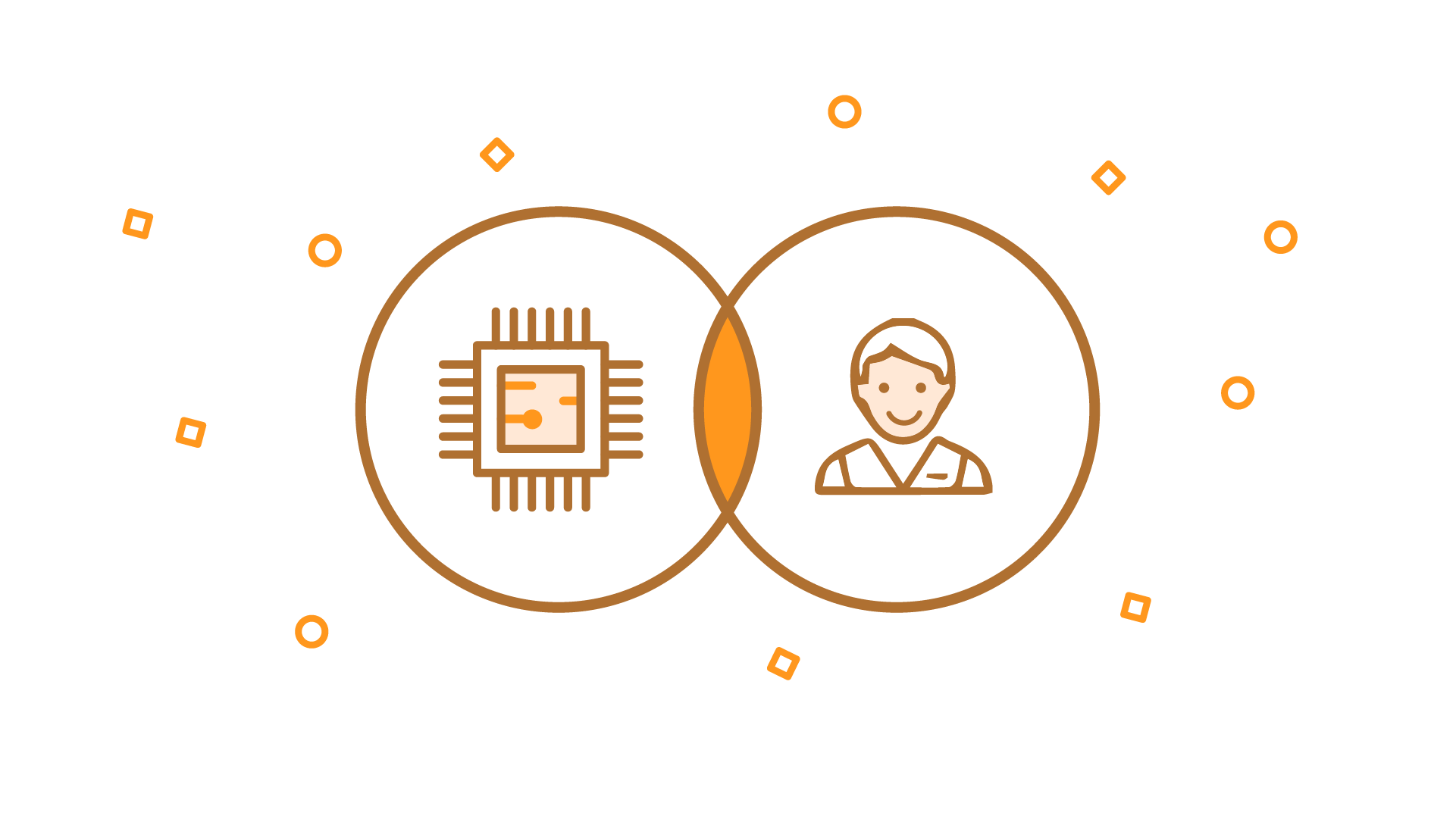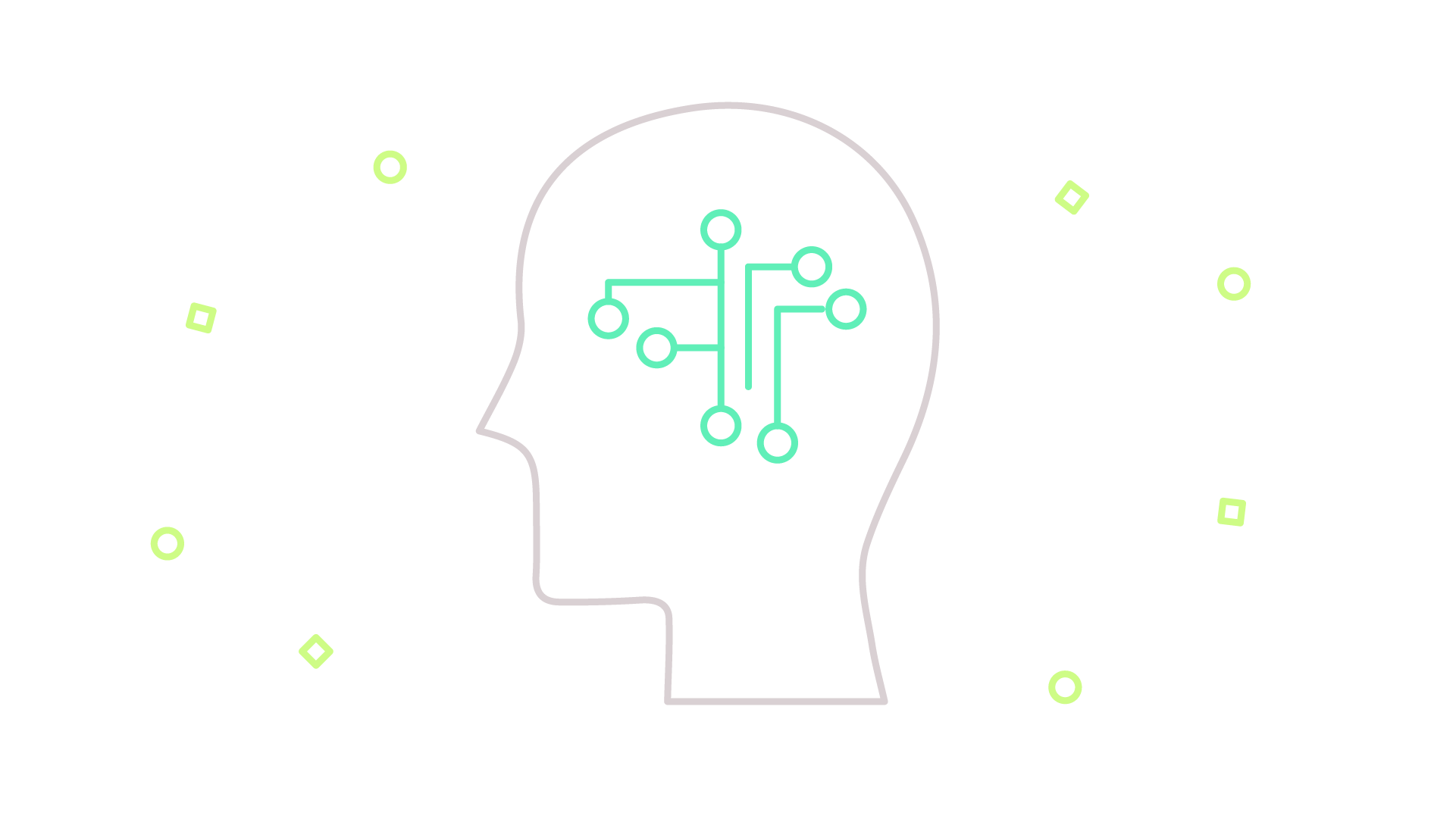Introducing artificial intelligence for engineering managers
As the years go on, Artificial Intelligence (AI) will become infused in all the tech products of our world. In order to stay a relevant leader or manager, it’s essential to have a solid understanding of AI and the business solutions it can provide. While you may not be the one implementing the solution, you need to speak the language of AI and understand the ethics of this powerful tool.
If you’re new to AI or are leading a team for creating AI solutions, you’re in the right place. Today, I will familiarize you with the basics of AI and the main concepts you need as a manager.
Today we will cover:
- Why does AI matter for your business?
- Fundamentals of AI: key terms and concepts
- Case studies and applications
- Ethics and AI
- What to learn next
See how AI can redefine your engineering team. #
Learn the basics of AI and best industry practices with real case studies and hands-on practice.
Why does AI matter for your business?#
Artificial Intelligence (AI) has been around a lot longer than you might think, and it is already integrated in many facets of our lives. Investments and real-world applications of AI has skyrocketed in the last years as the technologies have improved.
Now, companies, organizations, and industries around the world rely on AI technologies for basic operations and business solutions. AI is a foundational part of medicine, finance, automotive industries, and even retail. In all of these realms, one thing has proven true: AI systems make companies better. How?
Better data analysis#
These technologies help us process the massive amount of data that runs our world and make better decisions with less risk of human error. Intelligent machines and systems offer us insight that can’t be tracked or caught by the human eye. In the world of big data, it can be impossible for teams to evaluate information at any reasonable rate. But with AI, you have greater control over your data.
Automate monotonous tasks#
AI has also alleviated many of the repetitive and monotonous tasks that were traditionally delegated to human workers. Chat bots, for example, free up customer-service workers to focus on higher-level problems. This opens the door for employees in many industries to work in more creative, satisfying positions while our intelligent machines do the “dirty work”.
With AI, we can also think more creatively about problems that are too dangerous for human involvement, or work that falls outside of normal hours.
Minimize human error#
AI does not suffer from the same limitations that we do. This means that we can develop more reliable systems for anything from data automation to health care. In finance, for example, AI systems are used to detect errors and fraud warnings beyond the capacity of a human eye.
Simplify the customer experience#
AI has the potential to simplify and streamline the customer experience by providing streamlined services. Amazon, for examples, uses AI technologies to enhance their retail experience and limit human contact.
These services and technologies make it easier for customers to choose and order, cutting down on wait time or human-based systems. Banks, for example, use AI systems to provide guidance on financial decisions, making advising accessible.
There are so many other benefits that AI brings to business, no matter your industry. AI does not replace human efforts or creativity. It enhances and simplifies the human experience. Companies and teams everywhere should consider AI as an ideal solution for their business needs.
Fundamentals of AI: key terms and concepts#
The term artificial intelligence (AI) is everywhere these days, from finance and banking, to sci-fi films, and everywhere in between. Many terms we use for AI get used interchangeably, causing confusion for new learners. So, what actually is AI? And how does it differ from machine learning? What uses does it really have for engineering teams? Let’s dive in and define some terms!
Artificial intelligence (AI)#
AI is a broad term that has been used to describe subtly different things. AI generally refers to a machine that can respond to stimulation similar to human judgement.
Artificially intelligent machines are able to make decisions or perform cognitive functions such as learning, reasoning, perceiving, or problem solving.
In short, AI refers to getting computers to perform human tasks and solve business problems. Some examples of technologies that enable AI to help businesses are self-driving case, virtual agents, robotics, and machine learning (ML).
Artificial Intelligence…
- Human intelligence exhibited in machines
- A system can perform a task better than humans
- Speech Recognition, Natural Language Processing, Translation between languages
Machine learning (ML)#
Machine learning is an umbrella term we use to talk about algorithms that computers can learn from. In other words, ML is the ways that a computer actually learns and becomes “intelligent”.
Computers can only learn when they programmed to follow particular instructions in isolated experiences. Machine learning allows computers to actually learn from those experiences (aka data).
The main idea behind machine learning is algorithms. Think of an algorithms like a set of specific instructions that a computer will follow. You can then feed data into an algorithm, and it can build its own logic from there.
An example you’re probably familiar with is an email spam scanner. There are different techniques we can use to implement ML, such as deep learning.
Machine Learning…
- Umbrella term for algorithms and learning from data
- Based on algorithms
- ML programs repeat processes and learn from errors
Deep learning (DL)#
Deep learning is a technique we can use to implement machine learning. As a subfield of ML, deep learning is concerned with algorithms that are specifically designed like the structure of the human brain.
These are called artificial neural networks and deep neural networks (DNNs). In DNNs, code structures are arranged in layers that mimic how the human brain learns from patterns.
Deep Learning…
- A technique to implement ML
- Code arranged in layers like the human brain
- Learns patterns of patterns
- Use for complex ML tasks and goals
Learn how to build ethical AI systems for your team.#
Learn all you need to know about AI and machine learning to supercharge your engineering team. Educative’s text-based courses are easy to skim and feature live coding environments, making learning quick and efficient.
ML Algorithms#
In ML, you feed data to an algorithms, and it then builds its own logic. We call this training data. When working with algorithms, you have to consider the inputs, desired outputs, and process to obtain a desired output. There are dozens of different algorithms that have different uses.
ML algorithms can be categorized into three general groups:
Supervised Learning#
These kinds of algorithms are task driven and require a kind of supervisor to learn to predict the next value. The training data we provide includes the final solutions, called labels or class. These algorithms learn by “looking” at the correct examples. In other words, the algorithm has a supervisor, or a teacher, who provides it with all the answers first. These algorithms are useful for when:
- We know how to classify the input data
- We know the type of behavior we want to predict
- We need the algorithm to give us predictions for new unseen data
Unsupervised Learning#
In unsupervised learning, our training data has no labels, so the goal of the algorithm is to find relationships in that data. In other words, the system learns without a teacher. In unsupervised learning, you will deal with clustering, which finds structures in unorganized data. These algorithms are used for:
- Market segmentation
- Recommendation systems
- Detecting anomalies
- Analyzing networks of data
Reinforcement Learning#
Reinforcement learning is a more advanced category where the learning system needs to learn to make specific decisions. The agent observes an environment, performs actions, and gets rewards/penalties.
The goal of reinforcement learning is to maximize the reward over time. This is a trial and error system where the algorithms learns the best strategy. Reinforcement algorithms are best suited for:
- You don’t have much training data
- We cannot clearly define an ideal end state
- The only way to learn about the environment is to interact with it
- Robotics, trade execution, and healthcare
Case study and applications#
Now that we are familiar with the basic concepts and terms, let’s discuss how Artificial Intelligence can be applied to our businesses and teams. We will be looking at some real-world case studies and applications. AI is common in business for things like:
- Predicting the number of items that a customer will purchase
- Predicting traffic jams
- Classifying emails and detecting spam
- Online customer support
- Sentiment analysis of customers from emails
- Authorship identification
- Targeted ads and marketing suggestions
- Social media recommendations
Let’s take a deep dive into a real-world case study of a company that invested in AI solutions: Netflix. Netflix has used AI behind-the-scenes to the improve user experience, namely through recommendations.
Netflix’s movie and show recommendations use contextual information to find ideal recommendations for a user as soon as they watch new content. The algorithms in place are based on the assumption that a user will follow similar viewing patterns to others that have watched that same content. This is called collaborative filtering.
Taste similarity is a powerful tool that AI can provide to businesses that offer a variety of products. This system is based on tagging, wherein shows and films are tagged and measured in line with a user’s preferences. These algorithms also use contextual information such as time of day, devices used, and more, to make an effective suggestions.
At Netflix, AI principles even apply to automate artwork personalization, where the algorithm will reveal a different cover image based on tagging, contextual information, and past views. Netflix uses reinforcement technology called Contextual Bandits to learn how users want their content.
These services have greatly improved the user experience on Netflix and enhance our day-to-day interactions with the content we love. This kind of optimization benefits users, employees, and everyone in between.
Ethics and AI#
AI brings a lot of value to organizations of all types. But we do need to be cautious about the way we harness its power. As a leader or manager, it is your responsibility to embrace AI in a responsible manner and prevent mistakes as your team deploys AI into your projects. Even well-intentioned teams can get negative press for their effort.
The key to being ethical in our use of AI has to do with outputs, inputs, and privacy. Outputs needs to fairly assessed; inputs need to be analyzed for discriminatory data, and data acquisition cannot come at expense of others’ privacy. Let’s discuss some of the main principles that we need to consider as we design and implement AI solutions:
- AI systems should treat all people fairly. There is a shocking history of AI generating racially biased or discriminatory results. We must design systems with inclusion and representation in mind.
- AI systems should respect privacy. Data misuse has damaging effects on society, and regulations have been released to protect user’s privacy while still harnessing the power of their data. We need to collect, handle, and process data within ethical boundaries.
- AI systems should be secure. It can be easy to fool data and generate false results. This can lead to mis-categorization. We need to be aware of attacks and monitor security with ethical strategies.
As we continue to apply AI systems and technologies to our world, we must remain vigilant and devoted to ethical solutions. If you are a manager, I recommend that you dive deeper into the topic of ethics and responsibility with AI. Take a look at other case studies or project go awry. Start by learning more about racial bias and machine learning algorithms.
What to learn next#
Congrats! You’ve just completed your basic introduction to AI for managers. But there is still so much to learn. From here, you should consider the following concepts:
- Algorithms and business use cases
- Convolutional neural networks
- Recurrent neural networks
- Systems and architectures for AI
- AI evaluation metrics
To get started on these concepts, get started with Educative’s course Grokking AI for Engineering & Product Managers. This course walks you through the basics AI, the different types of algorithms, best practices, and infrastructure for creating great AI products that users trust. Along with more real-world case studies, this course is ideal place to become an ethical manager that harnesses the power of AI.
Get started today and supercharge your engineering team!
Continue reading about AI and leadership#
Free Resources


